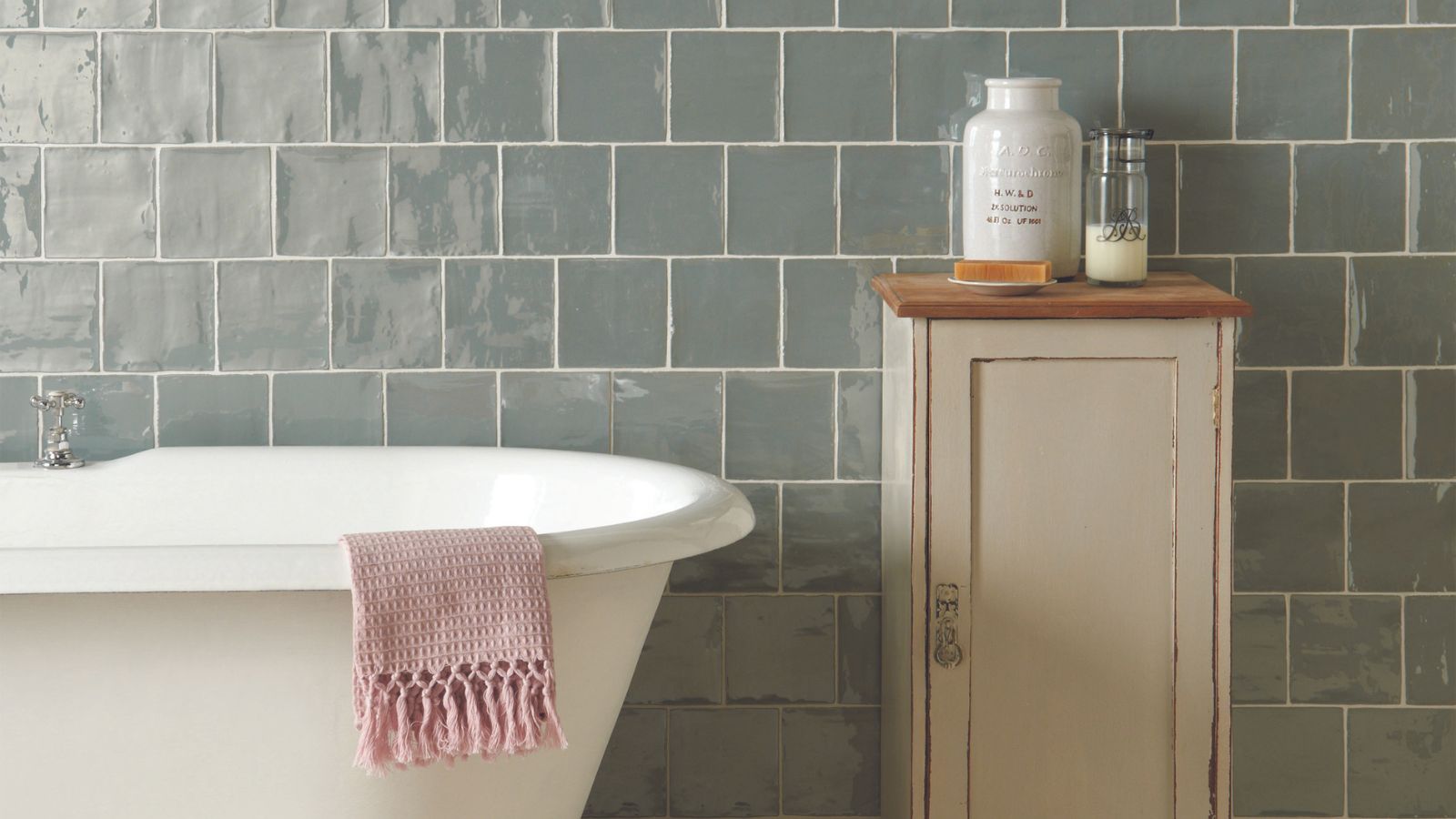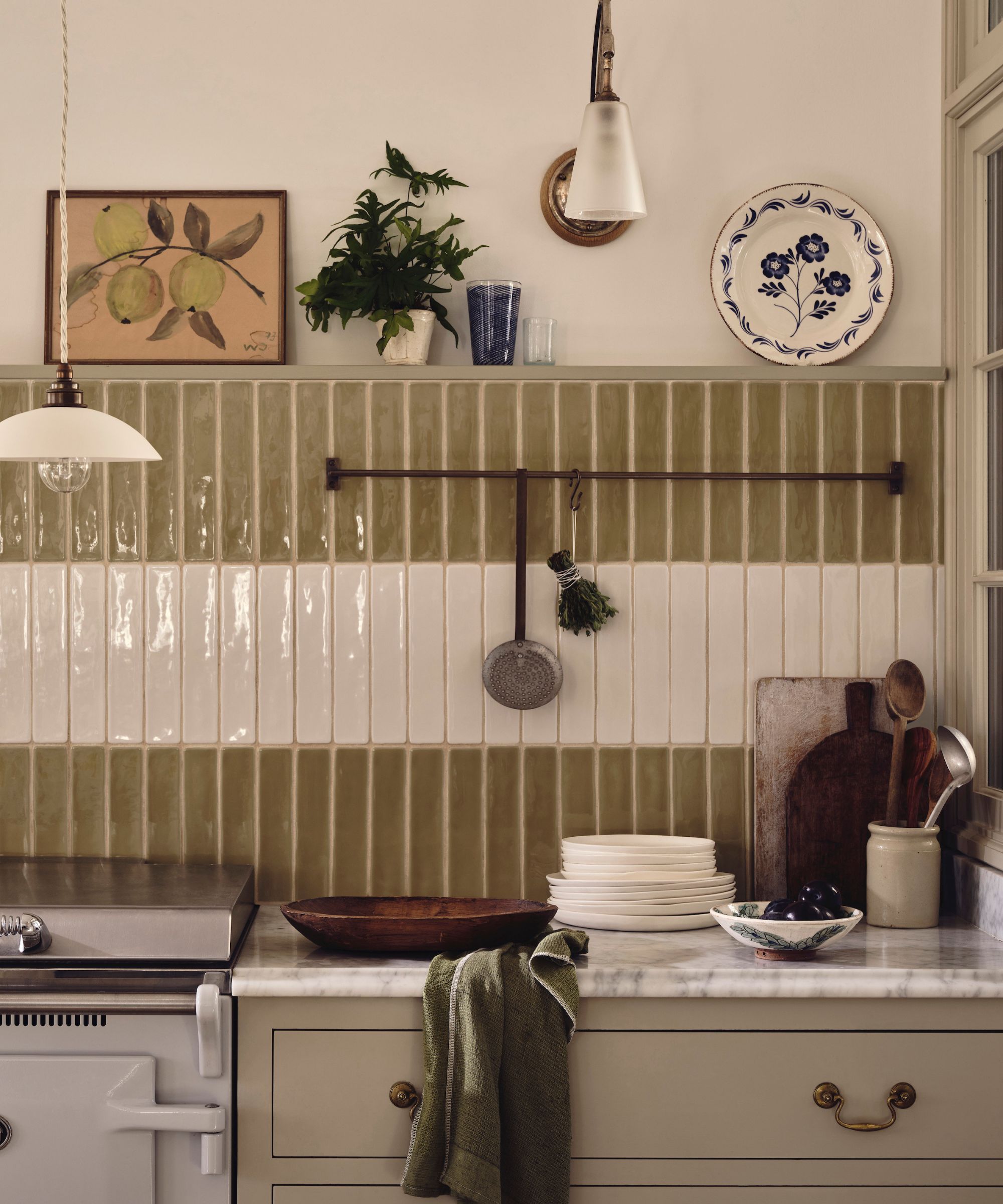How to remove tile grout – 5 steps with minimal mess
Professional contractors explain how to remove tile grout to help you regrout and renovate your home without taking messy shortcuts


If your grout is looking a little worse for wear and cleaning isn't helping, or you have broken a tile and need to switch it out, you will need to know how to remove tile grout.
This task might sound tricky given the seemingly indestructible nature of set grout, but much like grouting tiles, learning how to remove it is relatively simple – albeit a bit messy.
Here, professional contractors explain how to remove tile grout carefully to avoid tile damage.
How to remove tile grout
Although you probably don't want to remove tile grout and regrout every time you need to clean grout, it can be handy if the grout is stained beyond repair or you have noticed cracks and damage.

1. Gather your tools
Removing tile grout will require a few DIY tools you might not already have in your toolbox, such as a grout saw or a very sharp blade, begins Jay Sanders, licensed contractor and owner of Castle Dream Construction.
‘Not sure, what would be the best choice? Try using the DEWALT DWE305 Reciprocating Saw and Dremel's High-Performance Rotary Tool, both at Amazon’ he advises.
It can also be a good idea to keep a clean, damp cloth to hand to remove excess dust as you work and a drop cloth to help collect dust if you are working on bathroom wall tiles or a tile backsplash. This will help to make some of the cleanup easier.
Design expertise in your inbox – from inspiring decorating ideas and beautiful celebrity homes to practical gardening advice and shopping round-ups.
2. Prioritize your safety
Alongside your essential DIY tools you should always keep some safety gear such as a dust mask, safety gloves, and eye protection – especially when working with dusty projects and sharp blades. Even if you are only working around one tile, there is a possible chance of flying debris that can cause lasting injuries.
Even with a dust mask, you should also ensure the room has good ventilation. Open windows and doors to help filter out dust.
3. Start at the edges of the grout
When removing grout, start at the edge of the grout line and work inwards towards the middle, recommends contractor Jay Sanders:
‘You may use a multi-tool or a grout saw to cut into the grout lines at the edges. For this purpose, you may use carbide-grit blades as they can last up to 10 times longer than standard blades available in the market.’ he recommends. ‘You must apply minimal pressure or force to avoid tile damage or cracks – let the tool do the work.
‘Improve your overall work efficiency and accuracy by taking breaks every 30 minutes,’ he adds.
With the grout cut, you can then use a wall scraper to fish any chunks of grout out and away from the tile.
4. Clean as you go
When removing tile grout, it helps to stop cutting every so often and wipe the area clean with a damp cloth so you can see what you are doing. Keeping the area fresh will improve efficiency and minimize the risk of tile damage. You might also need to use a stiff-bristled brush to remove dust deeply embedded in the old grout line gap, Jay Sanders, contractor, adds.
When cleaning up after removing the grout, consider using the best vacuum cleaner with a HEPA filter to prevent the dust from damaging your appliance, and run an air purifier to help collect lingering dust particles from the air after cleaning.
5. Work on a warm, dry day
If you are looking to replace tiles or grout on the same day as removing it, it helps to work on a warm day, says Kerry Hale from Mira Showers:
‘It makes sense to grout during the spring and as cold winter temperatures slow the setting process which weakens the quality of the grout whilst the heat and humidity of the summer can prevent the grout from curing properly leading to a poor finish,’ they explain.
If you can’t get a warm, dry day, you can always ensure that your central heating is turned up, or use a dehumidifier to help the setting process.
FAQs
Do I have to remove all the old grout before regrouting?
If you are regrouting tiles to improve the look of the space or change the color of your grout, it helps to remove all of the old grout as it will give you a smoother, more professional-looking finish. If you are only removing the grout around one tile to replace a single tile, then you do not need to remove all of your tile grout – just be aware that the fresh grout may look a different color to the existing grout.
Can I put new grout over old grout?
If you do not want to remove old grout before regrouting, you can grout off the top of the old grout, so long as you thoroughly clean and dry it first to create a good surface for the grout to adhere to. It can also help to remove a small amount of the grout so that the new grout does not stick out over the edge of your tiles.
If you are considering removing tile grout because your grouting is stained, or you no longer like the color, you can consider painting grout lines instead. So long as you use the right products, such as grout paint, or a grouting pen, it will be a lot quicker and more efficient than removing grout and regrouting. It is also a lot tidier, making it a great DIY project to transform your home in a weekend – especially for a beginner.

Chiana has been at Homes & Gardens for two years and is our resident 'queen' of non-toxic living. She spends most of her time producing content for the Solved section of the website, helping readers get the most out of their homes through clever decluttering, cleaning, and tidying tips. She was named one of Fixr's top home improvement journalists in 2024.
